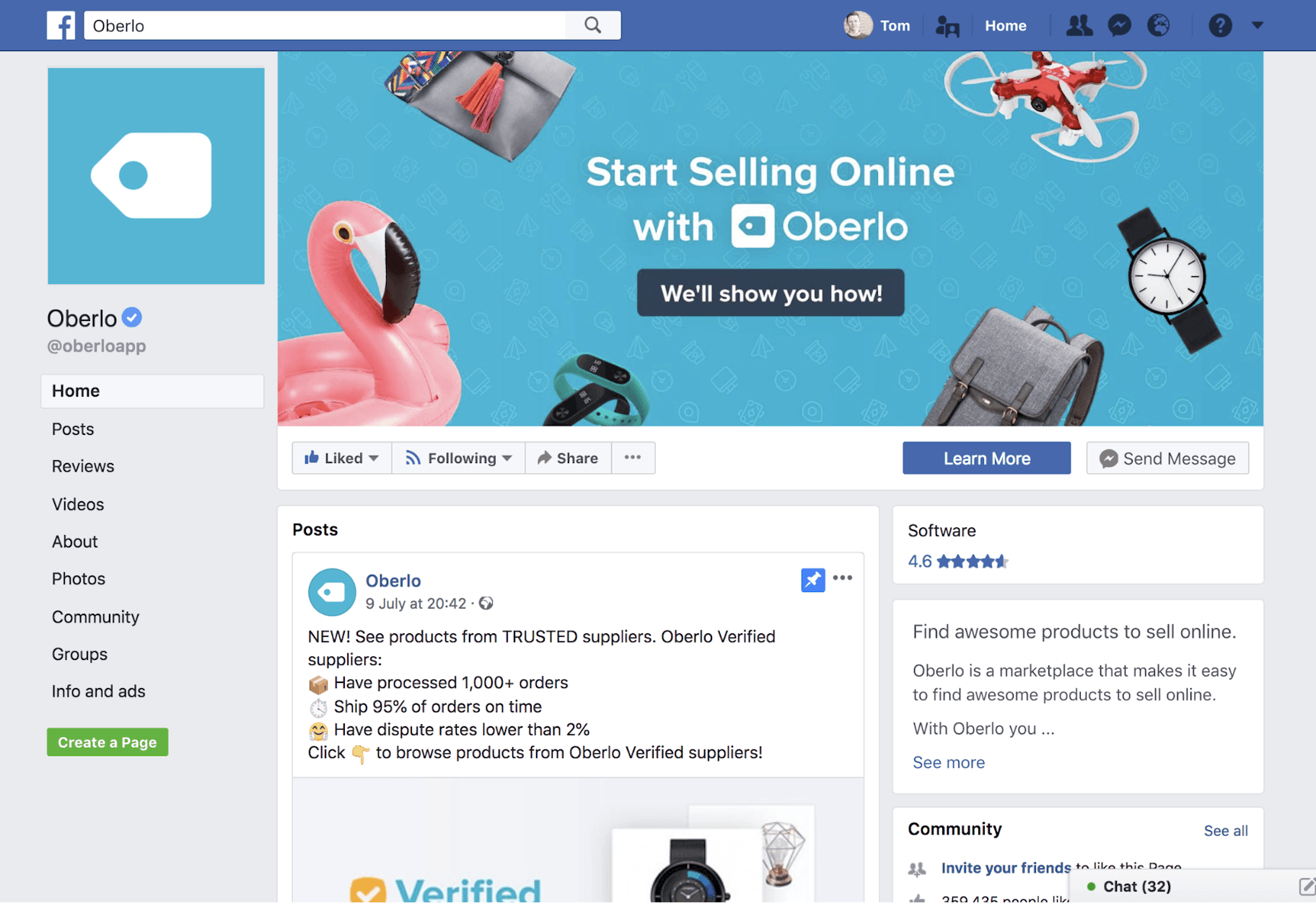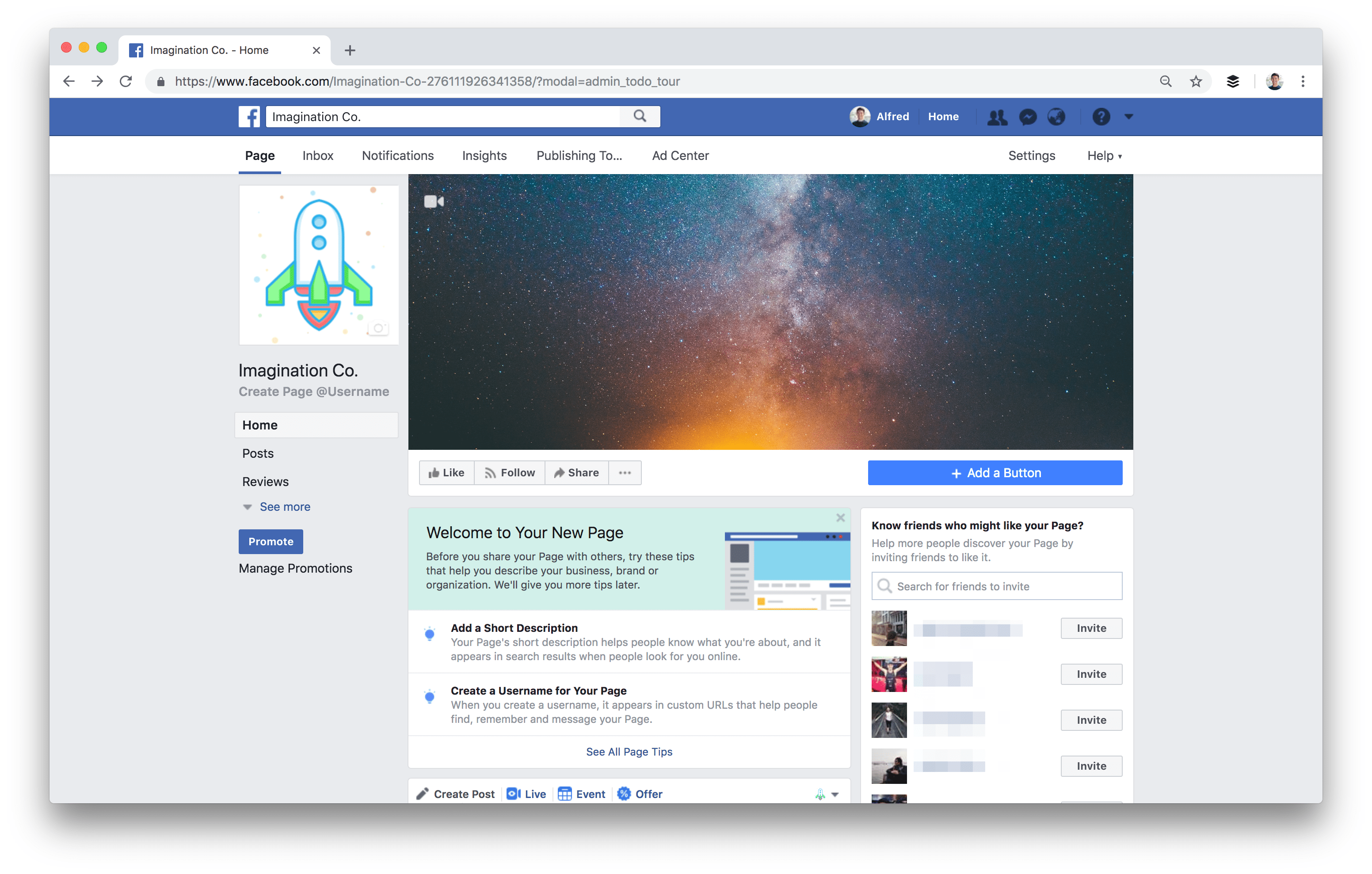Introduction to Facebook:
Facebook is a leading social media platform founded by Mark Zuckerberg and his college roommates in 2004. Initially created as a platform for Harvard University students, Facebook quickly expanded to other universities, then to the general public, and eventually became a global phenomenon. As of my last update in January 2022, Facebook boasts billions of active users worldwide, making it one of the most popular social networking sites.
Key Features of Facebook:
- Profile: Users can create personal profiles with information about themselves, photos, and updates.
- News Feed: A customizable stream of updates from friends, pages, and groups that users follow.
- Friends: Users can connect and interact with friends by sending friend requests, messages, and reactions to posts.
- Groups: Communities based on common interests where users can discuss, share content, and organize events.
- Pages: Dedicated profiles for businesses, organizations, public figures, and brands to connect with their audience.
- Messenger: A messaging app integrated with Facebook for private conversations.
- Events: Users can create and RSVP to events, ranging from parties to community gatherings.
- Marketplace: A platform for buying, selling, and trading goods locally.
- Advertising: Robust advertising tools for businesses to reach their target audience.
- Analytics: Insights and analytics to track performance and audience engagement.
Why Facebook is So Popular:
Facebook’s popularity can be attributed to several factors, including its user-friendly interface, expansive network, diverse features catering to various interests, and constant innovation to adapt to changing user needs and preferences. Additionally, Facebook’s ability to connect people globally, facilitate communication, and serve as a platform for sharing information, news, and content has contributed to its widespread adoption and continued relevance.
Facebook app interface:
How to Create an Account on Facebook:
To create a personal Facebook account, individuals can follow these steps:
- Visit the Facebook website or download the Facebook app.
- Click on “Sign Up” and enter your name, email or phone number, password, date of birth, and gender.
- Click “Sign Up” again and follow the prompts to complete the account creation process.
- Verify your email address or phone number to activate your account.
How to Create a Business Account on Facebook:
To create a Facebook Business account, follow these steps:
- Go to the Facebook Business homepage.
- Click on “Create Account” and follow the prompts to enter your business name, email address, and password.
- Verify your email address to activate your account.
- Complete your business profile by providing additional information about your business, such as category, location, and contact details.

Growing a business on Facebook involves strategic planning, consistent engagement, and targeted marketing efforts. Here are some steps to help you grow your business on Facebook:
- Create a Compelling Facebook Page:
- Set up a professional-looking Facebook Page with high-quality images, a clear description of your business, and relevant contact information.
- Customize your page to reflect your brand identity and showcase your products or services effectively.
- Post Engaging Content Regularly:
- Share valuable and relevant content that resonates with your target audience.
- Mix up your content with a variety of formats, including text posts, images, videos, and links.
- Use storytelling to connect with your audience emotionally and build stronger relationships.
- Leverage Facebook Groups:
- Join relevant Facebook Groups related to your industry or niche.
- Participate actively in discussions, offer valuable insights, and provide support to group members.
- Avoid spammy self-promotion but share your expertise and subtly promote your products or services when relevant.
- Run Targeted Advertising Campaigns:
- Utilize Facebook Ads Manager to create and manage targeted advertising campaigns.
- Define your target audience based on demographics, interests, and behaviors.
- Experiment with different ad formats, such as carousel ads, video ads, and lead generation ads, to see what works best for your business.
- Engage with Your Audience:
- Respond promptly to comments, messages, and reviews on your Facebook Page.
- Show appreciation for positive feedback and address any concerns or complaints in a timely and professional manner.
- Encourage user-generated content by running contests, asking for feedback, or featuring customer testimonials.
- Host Facebook Live Sessions:
- Use Facebook Live to connect with your audience in real-time and showcase your products, behind-the-scenes footage, or Q&A sessions.
- Announce your live sessions in advance to build anticipation and increase viewership.
- Engage with viewers during the live broadcast by responding to comments and questions.
- Measure Performance and Adjust Strategies:
- Monitor your Facebook Page insights to track the performance of your posts, ads, and overall engagement metrics.
- Analyze which types of content resonate most with your audience and adjust your strategy accordingly.
- Continuously test and refine your marketing efforts to optimize results and achieve your business goals.
By implementing these strategies consistently and staying responsive to your audience, you can effectively grow your business on Facebook and establish a strong online presence.
How to Create a Page on Facebook:
To create a Facebook Page for your business or organization, follow these steps:
- Log in to your Facebook account.
- Click on the “+” icon in the top-right corner of the screen and select “Page.”
- Choose a page type (e.g., business, community, public figure) and fill out the required information, such as page name, category, and description.
- Upload a profile picture and cover photo.
- Click “Create Page” and follow the prompts to customize your page settings and add additional information.

How to Get Audience on Page:
To grow your audience on Facebook Page, consider the following strategies:
- Post engaging and relevant content regularly to keep your audience interested and active.
- Invite your friends, colleagues, and existing customers to like and follow your page.
- Promote your page on other social media platforms, website, and marketing materials.
- Participate in relevant groups and communities to connect with potential followers.
- Collaborate with influencers or other businesses to cross-promote each other’s pages.
- Utilize Facebook Ads to target specific demographics and expand your reach.
How to Advertise on Facebook:
To advertise on Facebook, follow these steps:
- Go to the Facebook Ads Manager or Business Manager.
- Choose your advertising objective, such as brand awareness, lead generation, or conversions.
- Define your target audience based on demographics, interests, and behaviors.
- Set your budget, ad format, and ad creative (e.g., image, video, carousel).
- Monitor your ad performance and adjust your targeting and budget as needed to optimize results.

How to Earn Through Facebook:
There are several ways to earn money through Facebook, including:
- Selling products or services through a Facebook Page or Marketplace.
- Monetizing content through the Facebook Partner Program, including ad revenue from in-stream ads on videos.
- Affiliate marketing by promoting products or services and earning a commission on sales generated through your affiliate links.
- Offering consulting, coaching, or other services to businesses or individuals through your Facebook network.
- Partnering with brands for sponsored content or endorsements.
Additional Things About Facebook Marketplace:
Facebook Marketplace is a platform within Facebook where users can buy, sell, and trade goods locally. Some additional points about Facebook Marketplace include:
- Listings are typically categorized by location and product type, making it easy for users to find what they’re looking for.
- Transactions are usually conducted in person, although shipping options may be available for some items.
- Facebook Marketplace provides a convenient way for individuals and businesses to reach local buyers without the need for a dedicated e-commerce website.
- Users can communicate with potential buyers or sellers through Messenger to negotiate prices, arrange pickup or delivery, and ask questions about listings.
- Facebook Marketplace is free to use, and listings can be created directly from a personal profile or a Facebook Page.
1.The key features of Facebook Pages that make them useful for businesses and organizations
Facebook Pages offer businesses and organizations a platform to create a public presence on Facebook. Key features include customizable profile and cover photos, the ability to post updates, photos, videos, and events, messaging functionality for direct communication with followers, insights and analytics to track performance, and the option to run advertising campaigns.
2. Businesses effectively utilize Facebook Pages to engage with their audience and promote their products or services
Businesses can effectively utilize Facebook Pages by consistently posting engaging content relevant to their audience, responding promptly to messages and comments, leveraging features like live videos and events to interact with followers in real-time, using Facebook Ads to target specific demographics and promote products/services, and analyzing insights to understand audience behavior and preferences.
3. Benefits of creating a Facebook Business account over a personal account for entrepreneurs and small businesses
Creating a Facebook Business account provides access to additional features specifically designed for businesses, such as advanced analytics and insights, advertising tools including ad creation and targeting options, access to the Facebook Business Manager for managing multiple Pages and ad accounts, and the ability to set up a Facebook Shop to sell products directly on the platform.
4. Facebook Marketplace work, and what types of products or services can be sold on the platform
Facebook Marketplace is a platform for buying and selling items locally or within a specified region. Users can list items for sale, browse listings based on location and category, and communicate with potential buyers/sellers via Messenger. A wide range of products and services can be sold on Marketplace, including but not limited to electronics, clothing, furniture, vehicles, real estate, and professional services.
5. Some strategies for businesses to optimize their presence on Facebook Marketplace and increase sales
Businesses can optimize their presence on Facebook Marketplace by ensuring accurate and detailed product/service listings, using high-quality images and descriptions, responding promptly to inquiries and messages, offering competitive pricing, promoting listings on other social media channels, participating in local community groups, and requesting reviews and feedback from satisfied customers.
6. Advertising on Facebook differ for personal accounts, Pages, and Business Manager accounts
Advertising on Facebook for personal accounts typically involves promoting individual posts or boosting them to reach a wider audience. Pages have access to more advanced advertising tools and targeting options, allowing businesses to create custom ad campaigns tailored to specific objectives and audiences. Business Manager accounts provide centralized control and management of multiple Pages and ad accounts, along with additional features for collaboration and organization.
7. Some common challenges businesses face when managing their presence on Facebook, and how can they overcome them
Common challenges include keeping up with algorithm changes, maintaining a consistent posting schedule, engaging with a diverse audience, managing negative feedback or reviews, and navigating the complexities of Facebook Ads. Businesses can overcome these challenges by staying informed about updates and best practices, using scheduling tools to plan content in advance, actively monitoring and responding to feedback, and seeking assistance from professionals or utilizing resources provided by Facebook.
8. The process of setting up a shop on Facebook Page and integrating it with Facebook Marketplace
To set up a shop on a Facebook Page, businesses need to access the “Shop” tab on their Page and follow the prompts to add products, set pricing and shipping details, and configure payment options. Integration with Facebook Marketplace allows businesses to automatically sync their Page shop listings with Marketplace, expanding their reach to a broader audience of potential buyers.
9. Facebook measure the effectiveness of advertising campaigns, and what metrics are important for businesses to track?
Facebook measures the effectiveness of advertising campaigns through various metrics such as reach, engagement, clicks, conversions, and return on ad spend (ROAS). Important metrics for businesses to track depend on campaign objectives but may include impressions, click-through rate (CTR), cost per click (CPC), conversion rate, and revenue generated.
10. Some best practices for businesses to maintain a positive reputation and handle customer interactions on Facebook Pages and Marketplace
Best practices include responding promptly to messages and comments, addressing customer inquiries and concerns professionally and empathetically, publicly acknowledging and resolving issues, soliciting and showcasing positive reviews and testimonials, being transparent and authentic in communications, and actively monitoring for any signs of negative sentiment or feedback. Additionally, businesses should adhere to Facebook’s community standards and guidelines to maintain a positive online reputation.
If you want to save Facebook stories and download them from Facebook, you can use the following apps:
- Facebook Story Saver app: This app allows you to save Facebook stories easily. Click here to download.
- Facebook Downloader app: This app enables you to download videos from Facebook. Click here to download.
You can also download the official Facebook app from the Google Play Store.
For more information and blogs, you can visit our website here.




